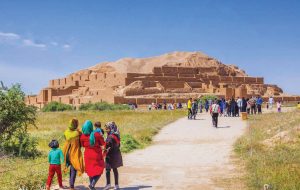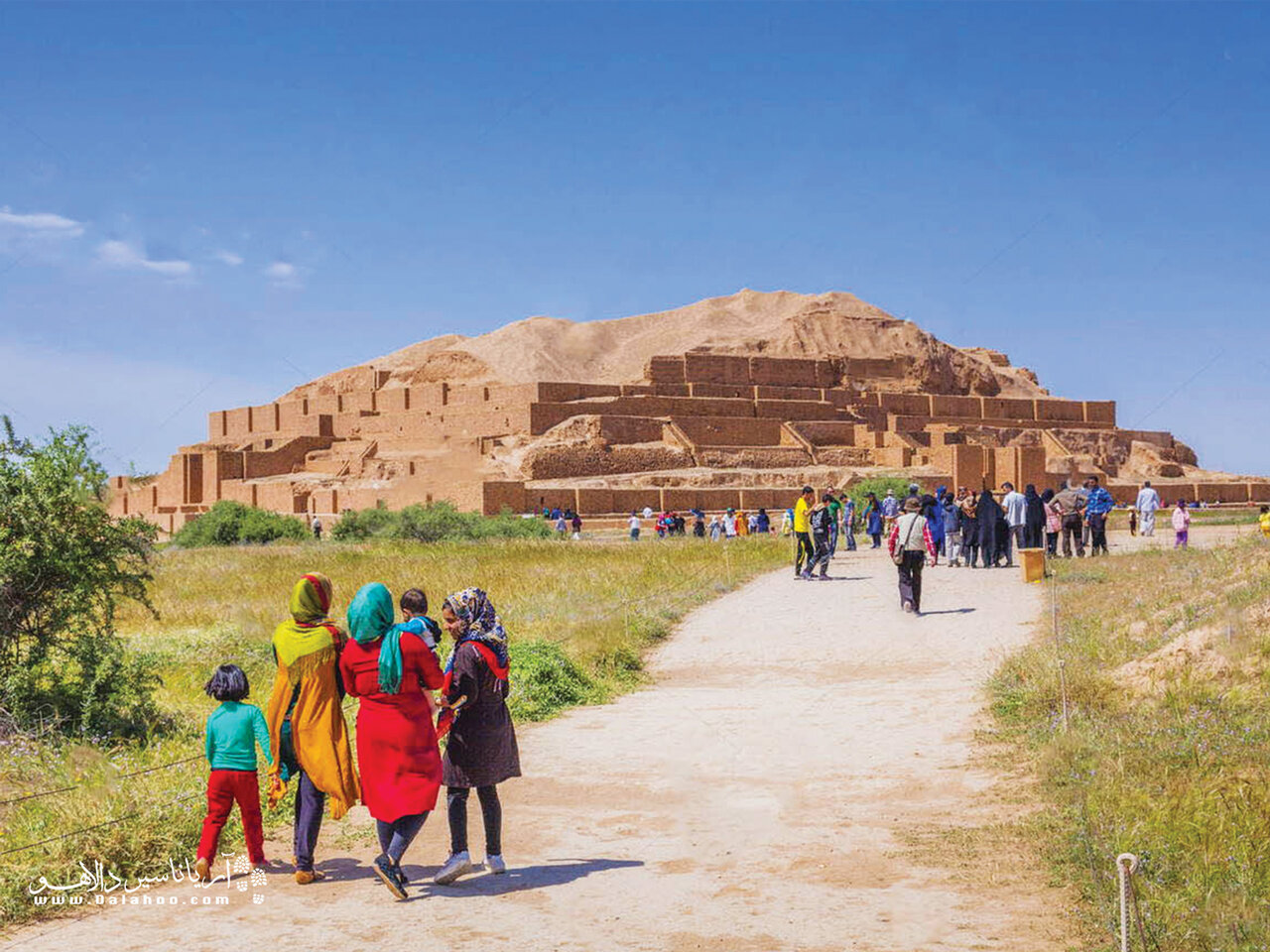Tchogha Zanbil upgrades protection: high-tech monitoring guards UNESCO site
TEHRAN – The historic ziggurat of Tchogha Zanbil in southwest Iran, a UNESCO World Heritage site, has taken significant steps to enhance its preservation. A total of 60 new surveillance cameras have been installed to ensure comprehensive monitoring and safeguard this ancient treasure, ILNA quoted Atefeh Rashnoei, director of the Tchogha Zanbil and the nearby


TEHRAN – The historic ziggurat of Tchogha Zanbil in southwest Iran, a UNESCO World Heritage site, has taken significant steps to enhance its preservation.
A total of 60 new surveillance cameras have been installed to ensure comprehensive monitoring and safeguard this ancient treasure, ILNA quoted Atefeh Rashnoei, director of the Tchogha Zanbil and the nearby ancient site of Haft Tappeh, as saying on Wednesday.
“Tchogha Zanbil now benefits from full camera coverage and proper lighting, with real-time monitoring accessible via a centralized web system. These measures aim to minimize physical damage to the site,” Rashnoei said.
A window into ancient Elamite civilization
Tchogha Zanbil, also known as the Ziggurat of Dur-Untash, is one of the earliest UNESCO-listed sites in Iran. Constructed around 1250 BC during the Elamite era, the site stands as a testament to the architectural brilliance of its time. Despite its global recognition, Rashnoei emphasized that only 10% of the vast ancient city has been excavated so far, leaving much of its history buried.
The city of Dur-Untash, where Tchogha Zanbil is located, was meticulously designed to align with natural phenomena, including the angles of sunlight, sunrise, and sunset, as well as the cardinal directions. The site features sophisticated water purification and distribution systems, hierarchical urban planning, and proportional architectural designs that reflect the ingenuity of its creators.
Conservation challenges and strategies
Preservation of Tchogha Zanbil’s mudbrick structures presents unique challenges, especially against environmental factors such as rainfall. Rashnoei noted, “Rainfall and water runoff are among the primary threats to the site. While we cannot control the weather, proactive measures can help protect these ancient structures.”
In this effort, seasonal workshops for mudbrick production are organized in accordance with the local climate. These bricks are then used to repair and reinforce vulnerable areas of the site, the official explained.
“Moreover, a detailed mapping system is employed to identify and address potential hazards, ensuring long-term protection.”
Global importance and budget constraints
Despite its unparalleled historical and architectural significance, Rashnoei highlighted the limited funding available for Tchogha Zanbil’s preservation.
She said the site’s inclusion in UNESCO’s World Heritage List alongside iconic landmarks like Persepolis underscores its cultural value, yet financial support remains insufficient.
Glimpses of Haft-Tappeh and Tchogha Zanbil
Haft-Tappeh (literary meaning “Seven Mounds”) is located 15 kilometers to the south of the ancient city of Susa, itself a highly significant archeological site in southwest Iran.
Early excavations in Haft-Tappeh conducted by the late Iranian archaeologist Dr. Ezzatollah Negahban yielded a large number of petroglyphs bearing cuneiform inscriptions in Akkadian, belonging to Elamite kings. The petroglyphs contain information on the religious beliefs, trading methods, and the political, cultural, and social relations of the time.
A topmost tourist destination in Khuzestan province, the magnificent ruins of Tchogha Zanbil (Choghazanbil) is considered by many the finest surviving example of Elamite architecture in the globe. It was made a UNESCO site in 1979. Its construction started in c. 1250 BC upon the order of the Elamite king Untash-Napirisha (1275-1240 BC) as the religious center of Elam dedicated to the Elamite divinities Inshushinak and Napirisha.
As mentioned by the UN cultural body, Tchogha Zanbil is the largest ziggurat outside of Mesopotamia and the best preserved of this type of stepped pyramidal monument. Tchogha Zanbil was excavated in six seasons between 1951 and 1961 by Roman Ghirshman, a Russian-born French archeologist who specialized in ancient Iran.
AM
